ARTNOUVEAU2 - INP_RIPCM Exhibition
05-10-2022
From September 10 on, Timisoara residents uncover the story of Art Nouveau at the Urseni Water Treatment Plant
The National Institute of Heritage (INP) and the Republic Institute for Protection of Cultural Monuments (RIPCM) brought here a double exhibition on the Romanian and Serbian Art Nouveau.

Two new exhibition projects are hosted this autumn at the Urseni Water Treatment Plant, in Timisoara, thanks to a partnership between the INP and Aquatim and to the ARTNOUVEAU2 project - a collaboration between representative institutions from 6 countries aiming at strengthening the cultural identity of the Danube region by promoting the common Art Nouveau heritage.
Timisoara residents and visitors are invited to discover the representative elements of this prominent artistic movement and the connections between the two countries bordering the Danube, as well as between the two European Capital of Culture cities (Novi Sad 2022, Timisoara 2023), through a double exhibition: "Expressions of the Total Art in Romania. Art Nouveau, Szecesszió, Sezession, Jugendstil", prepared by the National Institute of Heritage in Romania and " |Un|Usual Face of Art Nouveau", prepared by the Institute for the Protection of Cultural Monuments of Serbia. Both exhibitions can be seen at the Urseni Water Treatment Plant, on 26 Urseni Street, from 10 September to 12 November this year. Visiting hours are on Saturdays, from 12 to 5 pm. Public access is free.
"We are delighted that the exhibition arrives in one of the buildings representative of the way the movement known as Total Art (Gesamtkunstwerk) has manifested itself in our country. This time, the context for understanding this style so influential in the early 1900s is provided by a monument of the Industrial Sezession, - the Urseni Water Treatment Plant. We can see here the skill and balance of combining the technical solutions imposed by utilitarian architecture with remarkable elements of the Art Nouveau language. From the density of plastic details and motifs - much abstracted - to the role given to light in the aesthetics of the space, the plant is an important place on the map of Art Nouveau landmarks in Romania and the region" - said Irina Iamandescu, Deputy Director, Historic Monuments Directorate of the INP.
The Urseni Water Treatment Plant is featured on the panels of the INP exhibition, along with other monuments and cultural sights in Timisoara and current Romania, while the Serbian exhibition proposes a unique journey through three cities emblematic for the Art Nouveau movement in the neighbouring country (Belgrade, Novi Sad and Subotica).
A group of buildings belonging to the old Urseni Water Treatment Plant - the group of wells, the filter building and the pumping station, restored and arranged for visits - will be part of the future Water Museum in Timișoara, a place dedicated to the history of water, but also open to cultural and artistic events.
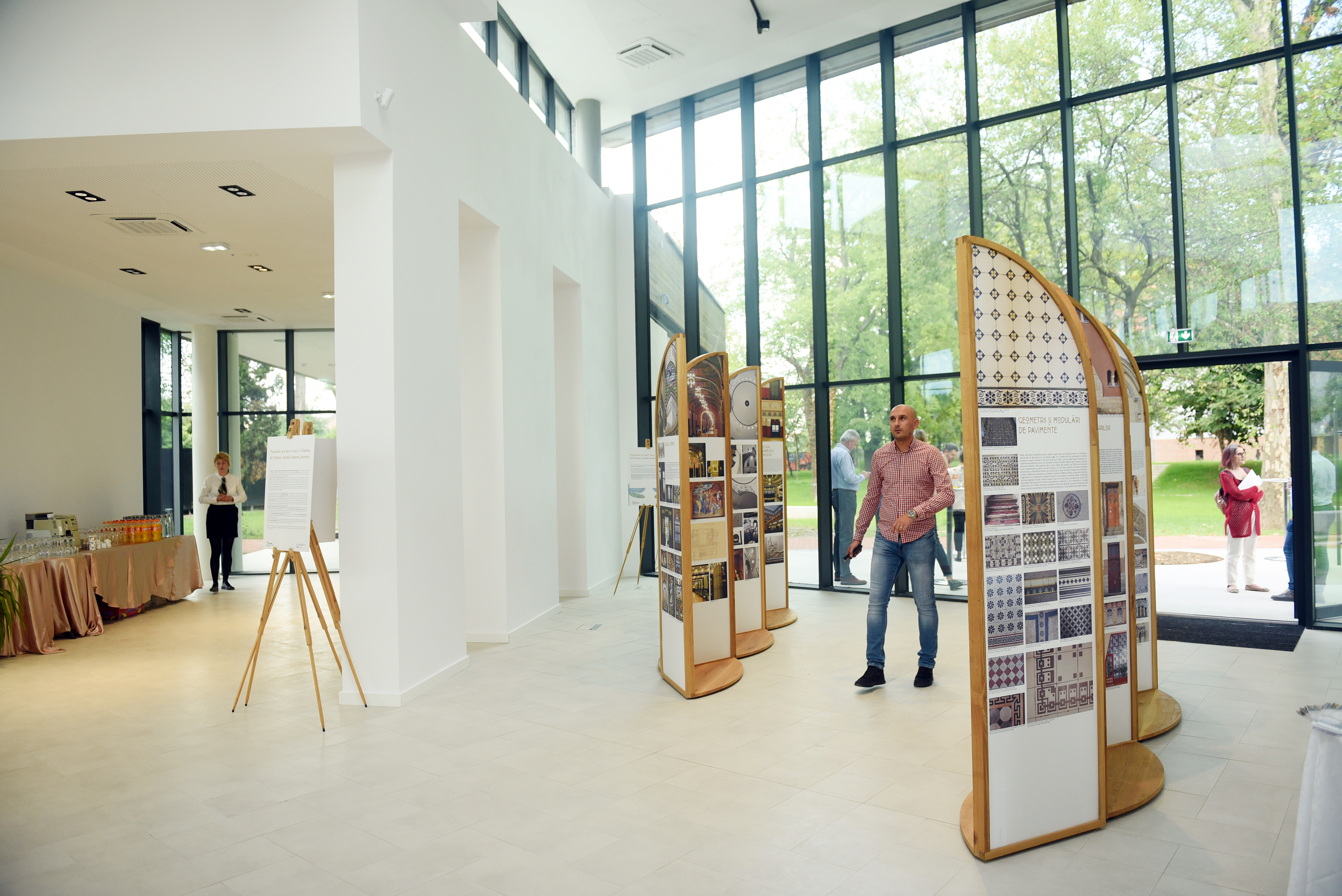

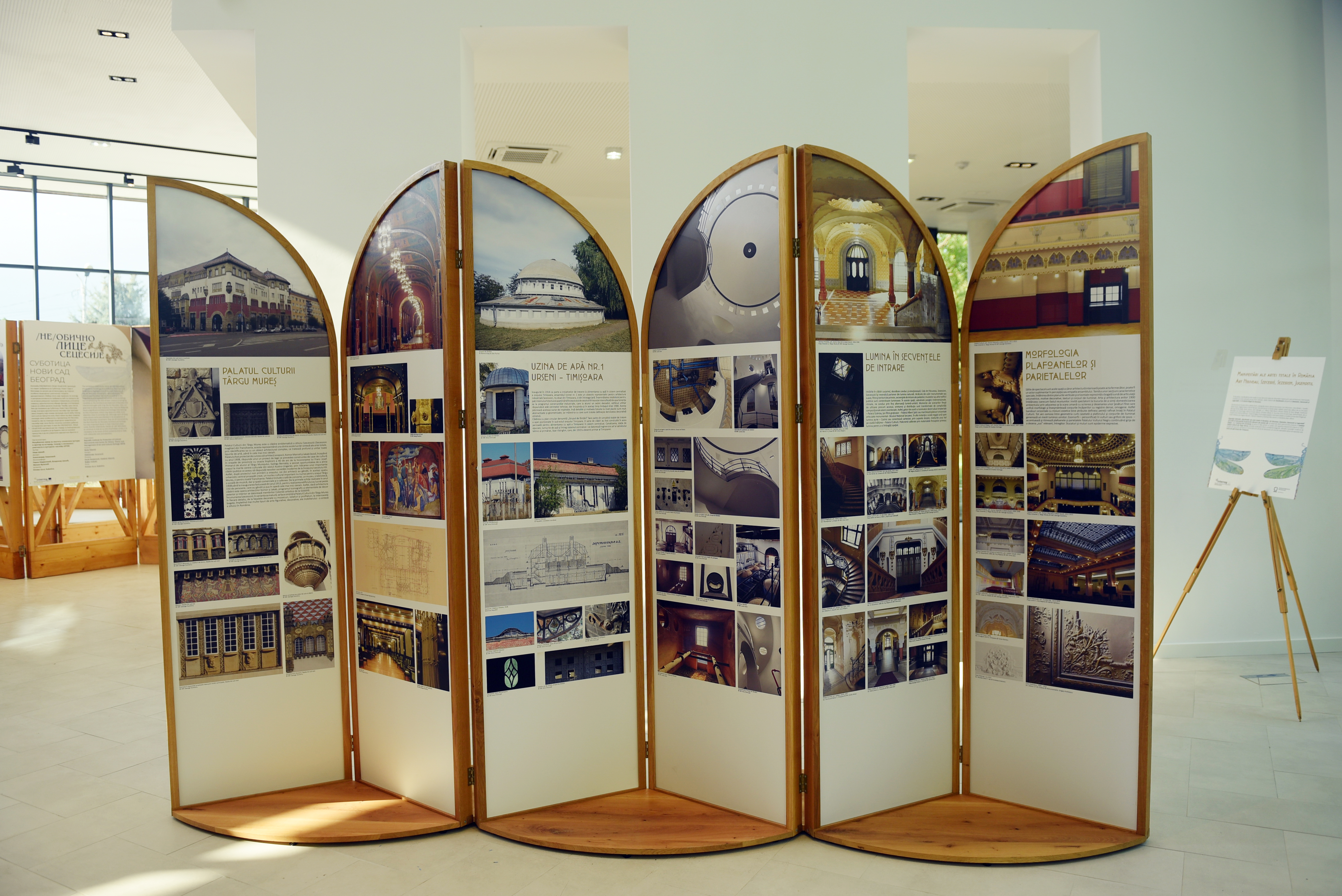
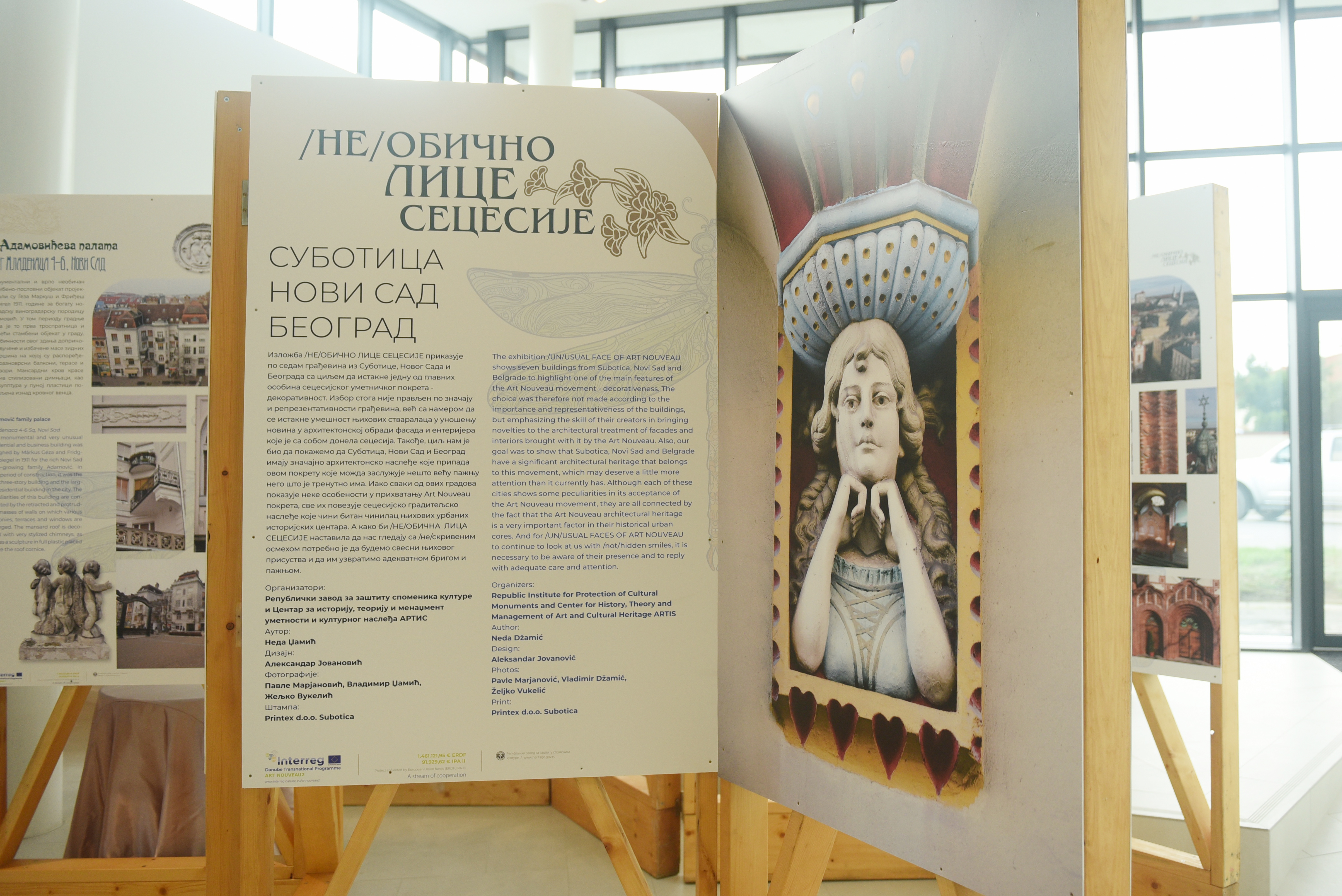

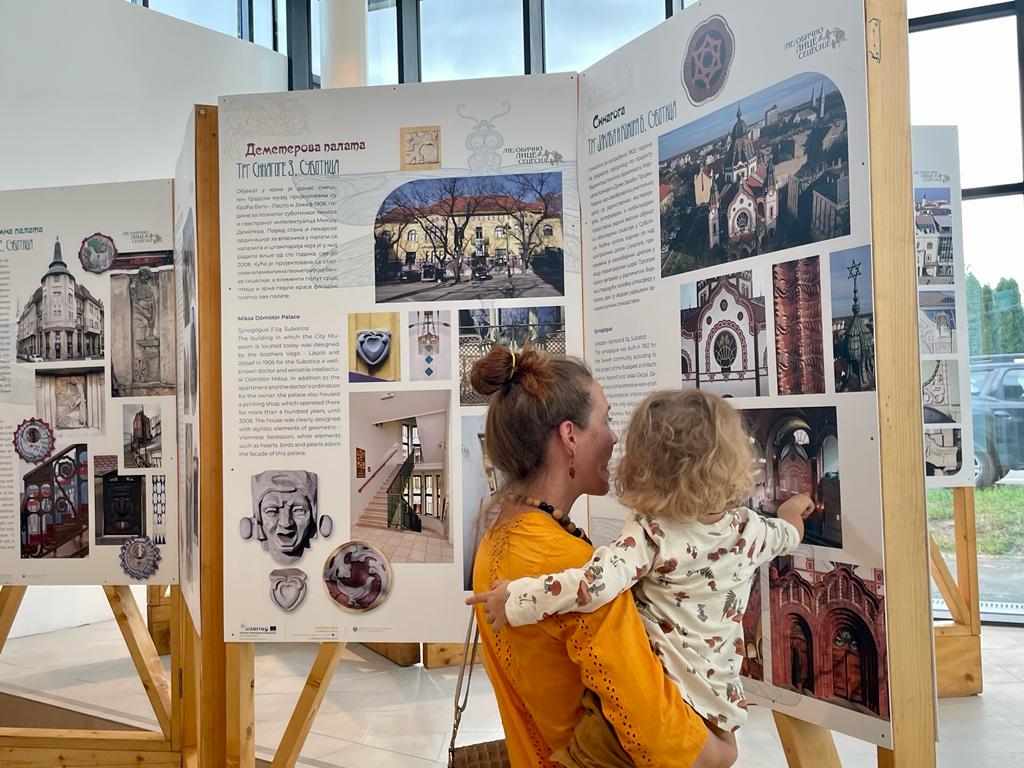
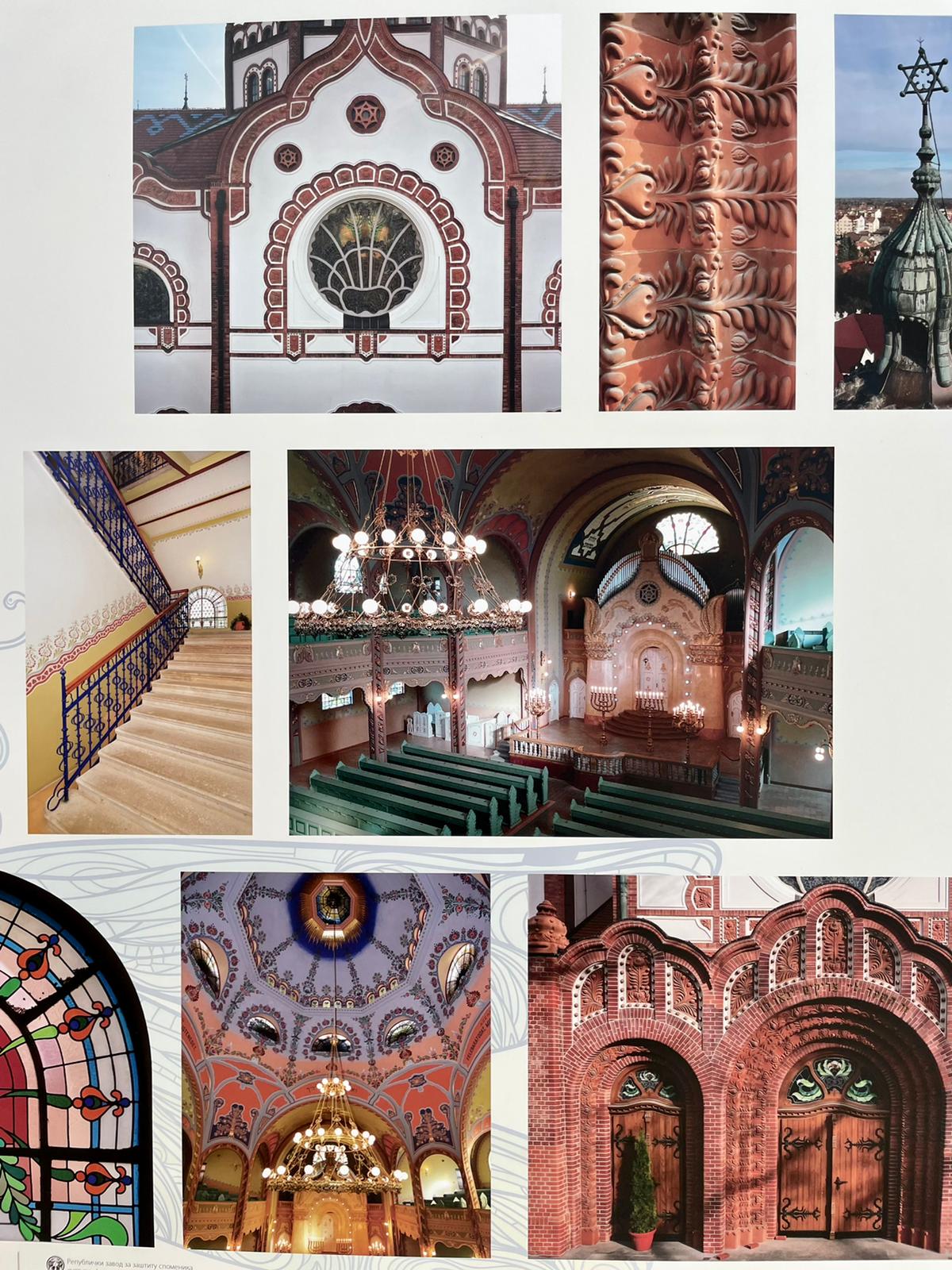

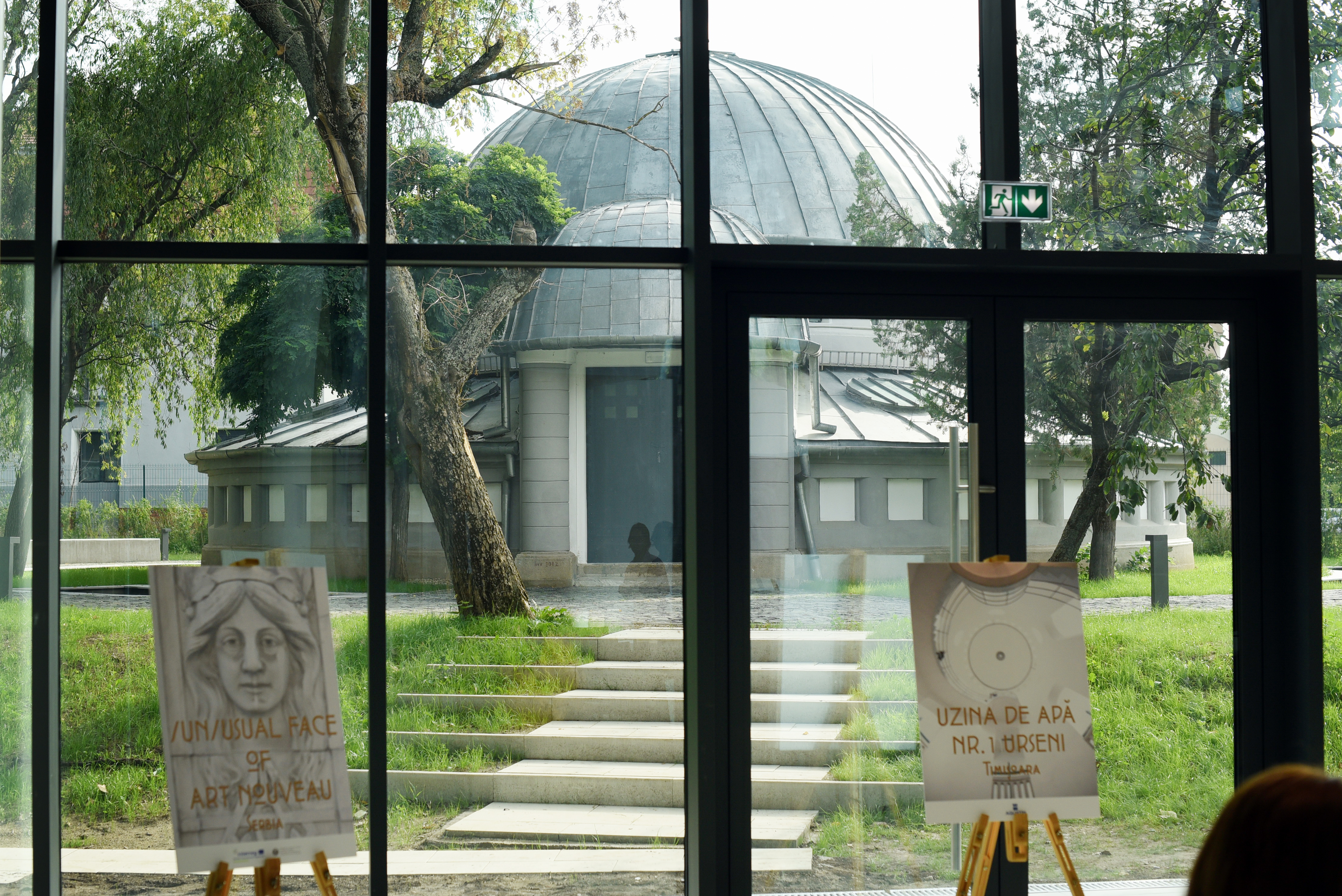




Photo credit: Constantin Duma, Diana Bilec, Aquatim, Irina Dobriță, Alexandra Simion
About Urseni Water Treatment Plant
Inaugurated in 1914 as part of the initiatives taken towards a centralized water supply system in Timișoara, the Urseni Water Treatment Plant is a representative example of Sezession, industrial architecture. The significance of the building for the architectural heritage of the early 20th century is intensified by its belonging to the industrial architecture , which then took on a particular momentum, the utilitarian building responding both to technical requirements and at the same time adopting the language of the 1900 Art. It retains the same sources of inspiration, but the details and motifs used are much more abstract and geometric, and the skill and craftsmanship with which they are treated define the decorative style. The circular building, known as the "Group of wells", is part of the water treatment plant located in the south-east of Timișoara. A series of buildings were constructed at that time to supply water to Timișoara in a centralised system. The modern water infrastructure is owed to the chief engineer of the technical service of the city hall, Stan Vidrighin, who became mayor of Timișoara in 1919.
What differentiates the curatorial approach of the National Institute of Heritage from other similar exhibitions?
In addition to the spectacular buildings representative of the expressions of Total Art in Romania, the sections of the INP exhibition include a series of details grouped into themes such as: the art of wood carpentry, geometries and floor modulations, decorative wall renderings, the expressiveness of fixtures and fittings, the craftsmanship of interior pieces, decorative objects etc. Elements with similar characteristics found both inside and outside the Carpathian arch have in common the effort to testify, at different paces, to the Art Nouveau / Szecesszió / Sezession / Jugendstil architectural phenomenon and the way it coexisted from the end of the 19th century until the beginning of the 1920s in this part of Europe. The cities represented in the exhibition through their Art Nouveau heritage are: Arad, Baia Mare, Băile Govora, Borsec, Botoșani, Brașov, Brăila, București, Calafat, Cluj-Napoca, Constanța, Corabia, Covasna, Craiova, Deva, Ditrău, Gheorgheni, Iași, Miercurea Ciuc,
Oradea, Ocna Sibiului, Odorheiu Secuiesc, Sfântu Gheorghe, Sinaia, Suceava, Târgu Mureș and Timișoara.
On the approach of the Institute for the Protection of Cultural Monuments of Serbia exhibition
At the heart of the Serbian exhibition is the Art Nouveau heritage of three cities - Belgrade, Novi Sad and Subotica - with the peculiarities of the adoption of Art 1900 in each of them as well as one feature that confirms their membership in the world movement of Total Art: decorativeness. Behind the art of decoration lays the talent of the creators and craftsmen and their innovation in the treatment of facades and interiors, in full accordance with the Art Nouveau movement. This is also behind the curators' decisions as to which towns and buildings are to be included in the exhibition - although not the best known, the three chosen cities are certainly indisputable faces of the local manifestation of the Art Nouveau style and deserve to be seen from a new perspective.
The two exhibition projects - including the related materials and events - have been realized by the National Institute of Heritage of Romania and the Institute for the Protection of Cultural Monuments in Belgrade within the ARTNOUVEAU2 project - Strengthening the cultural identity of the Danube region by building on the common heritage of ART NOUVEAU.
The project was initiated by the Municipality of Oradea and is developed in partnership with the following institutions: the National Institute of Heritage Romania, The Museum of Applied Arts and the University "Kodolányi János" from Budapest, MAK- the Austrian Museum of Applied Arts in Vienna, the Museum of Arts and Crafts in Zagreb, the Slovak University of Technology in Bratislava, the Republic Institute for the Protection of Cultural Monuments in Belgrade and the Foundation for the Protection of Historical Monuments in Bihor County, Romania. The project runs from July 2020 to December 2022 and is co-financed by European Union Funds (ERDF, IPA II) through the Interreg Danube Cross-Border Programme. Aquatim is a partner of the National Institute of Heritage (Romania) in hosting the exhibitions and organizing related events.
